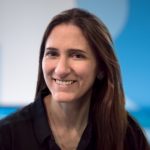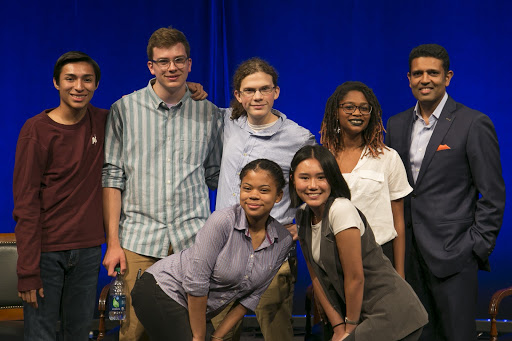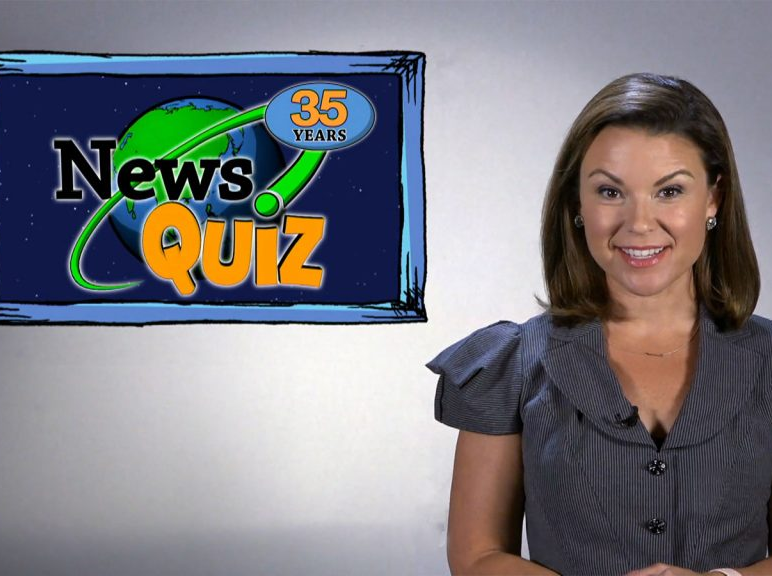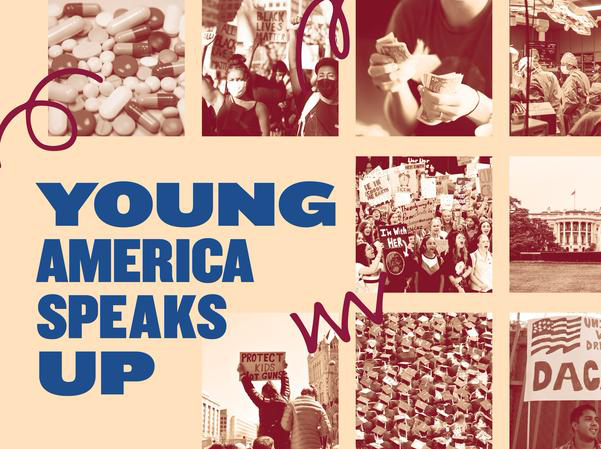The following post is part of a series springing from the Cooney Center’s joint initiative with the Corporation for Public Broadcasting, By/With/For Youth: Inspiring Next Gen Public Media Audiences. This is a project aimed at exploring the role of public media in the lives of young people by taking stock of the current landscape and imagining a future that public media can build alongside teens and tweens. With that in mind, we are inviting public media practitioners who are already experimenting and exploring with young audiences to reflect on their experiences and share their perspectives. We hope these posts will spark conversation, provide direction and resources, and raise up examples of the innovative work that public media stations across the country are creating to engage the next generation.
Each summer, PBS NewsHour Student Reporting Labs (SRL) invites 30 of the best youth storytellers from our network of 150 schools in 46 states to join us in Washington, DC for a week-long celebration of student journalism. These teens help us figure out the topics and projects that we’ll explore over the coming school year. They also give us invaluable insights into what Gen Z is going through, what they care about, and how to engage. A month later, educators gather for our Teacher Workshop to learn how to use our project-based video journalism curriculum, connect to their local PBS stations, build community buy-in, and amplify student voices in their communities.
This year, of course, these events went virtual. We had to rethink everything we do and how to do it. Our virtual Student Academy not only gave us first-hand experience with the challenges of remote learning–it also provided a real window into the disorientation, trauma, and grief that teens are feeling right now.
It’s clear that students will not be able to do their best work unless they feel seen and respected. In our new hybrid virtual world, the SRL team is rethinking everything we do and how we do it. My goal is to strengthen our program and nurture the diverse and compassionate media makers the world needs now. It’s going to be incredibly difficult; thank goodness you are here.
“What is our next step?”
Each week brings new lessons that we will use to be successful next school year. A summer PBS NewsHour broadcast, for example, was in many ways my SRL dream come true. First, teen voices offered thoughts on racial justice and policing in the wake of the killing of George Floyd. Then after an interview with Gen Z activists, the traditional Shields and Brooks political analysis (in which they listen and respond to the youth voices before them!) and finally, an artist on the power of the camera to shape and shift public perceptions.
Elevating Gen Z perspectives to the same visibility as older experts is critical in this moment when many Americans keep referencing the next generation as the hope and the change.
“A lot of times, you hear people say, oh, all lives matter, when they try to counter the Black Lives Matter movement. So, my question for the people who say this: When will there be equal opportunity in America for all races?” asked Corie McCowin, the SRL Gwen Ifill Fellow at NET/Nebraska PBS. These are the questions of our time: “What is our next step?” asks Yeonseo Seok of San Diego.
“We will be the generation that really revolutionizes this world and transforms the world for the better. But, at the same time, on the flip side, it is kind of a lot to say that the future of this entire world and this nation is resting on Gen Z’s shoulders, when we have barely even made it out of childhood yet,” said 16-year-old Thandiwe Abdullah. We also need to make sure “that older generations are doing their part in making sure that our future is bright as well.”
Columnists David Brooks and Mark Shields took notice. “I stand in awe of their intensity, of their passion, of their sense of urgency and their sense of justice,” said Shields. This was a full-circle moment for me, who as a desk assistant in the 1990s, used to walk Mark from the green room to the studio, looking forward to the huge bag of M&Ms he carried to celebrate the end of a long week.
Closing the program, photographer Mark Clennon described how the democratization of cameras and mobilization of young people using social media is a game-changer. Black Americans “can now educate our peers and educate ourselves as a community. And that is unique. That is the number one differentiator between now and the original civil rights movement, is our ability to tell our stories.”
Schools Re-open: 5 Ws and a big H
Student journalism with an emphasis on accuracy, fairness, and diverse perspectives is also a game-changer. Student journalists can shine a light on under-told stories, many of them in communities that have lost or are losing their local news sources. As schools roll out their reopening plans, student reporters will play a critical role in raising awareness of the local decision-making and the consequences of revised budget priorities, police in schools, schedules, instruction, lunch, recess, extracurriculars, buses, and so much more.
Here are some examples: in a moment when many communities are questioning the role of police, student reporters are looking at security in their schools, what is the budget, what are the stated and real outcomes for all students? Student journalists add a critical perspective to reopening plans. The CDC recommends students attend their local schools to limit time spent on buses and trains. What will this do to cities where students sometimes travel over an hour to attend a school that best matches their interests and strengths? How will districts reconcile the digital divide and address the fact that 28 percent of students at high-poverty high schools were “virtual dropouts” and did not participate in online learning this spring, compared to 11 percent of students at low poverty schools?
A week after my favorite Friday broadcast, the viewer mail included letters from 6th-grade students in Manhattan. Nora wrote, “I really enjoyed that you made a video interviewing people close to my age because I felt like I could really make a change if they could too.”
This is why we do the work, why we learn to listen, create paths for empathy, and why we rely on each other more than ever, even though we’re apart.
 Leah Clapman created Student Reporting Labs in 2009 as an experiment to engage middle and high school students with current events and reimagine public media for tweens and teens. Under her leadership, Student Reporting Labs has grown from 6 pilot sites to 150 schools in 46 states with partnerships extending from major media and online platforms to international education and youth initiatives. Leah has developed education products such as NewsHour Extra for teachers, Teachers Lounge and “Making the Grade,” a weekly focus on education issues, policy and practice. A Princeton graduate, she serves on the Education Writers Association journalism advisory, Education Innovators and Library of Congress TPS council.
Leah Clapman created Student Reporting Labs in 2009 as an experiment to engage middle and high school students with current events and reimagine public media for tweens and teens. Under her leadership, Student Reporting Labs has grown from 6 pilot sites to 150 schools in 46 states with partnerships extending from major media and online platforms to international education and youth initiatives. Leah has developed education products such as NewsHour Extra for teachers, Teachers Lounge and “Making the Grade,” a weekly focus on education issues, policy and practice. A Princeton graduate, she serves on the Education Writers Association journalism advisory, Education Innovators and Library of Congress TPS council.





